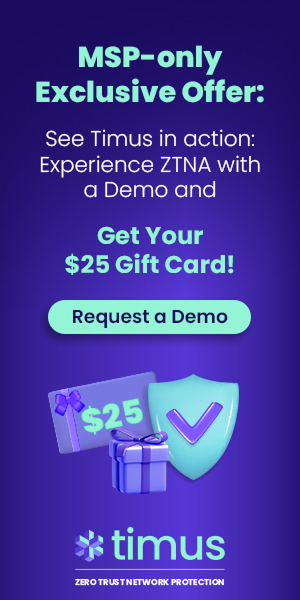Distributed Firewalls: Securing Your Network in the Modern Age
Traditional firewalls, while effective, can struggle to keep pace with the growing demands of modern IT infrastructures. This is where distributed firewalls come in, offering a more scalable and dynamic approach to network security. What is a Distributed Firewall? Think of a traditional firewall as a security checkpoint at the entrance of your castle. It controls all […]
Author
Date
Category
All Categories
- AI-powered security
- Attacks & Threats
- Cybersecurity
- Hybrid Cloud
- Network
- Network Firewall
- Network Protection
- News
- Remote Workforce
- Security
- Zero Trust
Contents
Popular Posts
Product
Join the Newsletter

Traditional firewalls, while effective, can struggle to keep pace with the growing demands of modern IT infrastructures. This is where distributed firewalls come in, offering a more scalable and dynamic approach to network security.
What is a Distributed Firewall?
Think of a traditional firewall as a security checkpoint at the entrance of your castle. It controls all incoming and outgoing traffic, ensuring only authorized visitors pass through. A distributed firewall, on the other hand, takes a more granular approach. Imagine security guards stationed throughout the castle, monitoring activity within specific rooms and corridors.
A distributed firewall deploys security policies directly on individual network components, such as virtual machines and physical servers. This distributed architecture offers several advantages over traditional firewalls, which are typically centralized devices.
How Does a Distributed Firewall Work?
Distributed firewalls are typically deployed as software agents on network devices. These agents communicate with a central management system, where security policies are defined and enforced. The agents then filter traffic at the source, inspecting packets directly on the device they reside on. This significantly reduces the load on the central firewall and allows for more granular control over network traffic.
Here’s a breakdown of the key functionalities:
- Deployment: Distributed firewall agents are installed on various network components like physical servers, virtual machines, and network endpoints.
- Communication: Agents communicate with a central management system, receiving security policies and updates.
- Policy Enforcement: Agents enforce the received policies, filtering traffic according to predefined rules. This can include allowing specific applications, blocking malicious traffic, and restricting access to sensitive data.
Key Components of a Distributed Firewall
A distributed firewall solution typically comprises several software or hardware modules:
- Firewall Agent: The software agent installed on individual network devices that enforces security policies and filters traffic.
- Central Management System: A central console that defines, configures, and manages security policies across the entire network.
- Policy Engine: The engine within the central management system that interprets and distributes security policies to the agents.
- Communication Protocol: A secure protocol for communication between agents and the central management system.
Types of Distributed Firewall Architectures
There are two main deployment models for distributed firewalls:
- Centralized Agent-Based: This is the most common architecture, where agents on network devices enforce policies received from a central management system (like VMware NSX Distributed Firewall).
- Decentralized: In this model, agents can communicate and enforce policies without relying on a central server, offering greater redundancy but potentially more complex management.
Benefits of Distributed Firewalls
Distributed firewalls offer several advantages over traditional firewalls:
- Scalability: Easily scales to accommodate growing network size by adding more agents.
- Improved Performance: Reduces network traffic on the central firewall, leading to faster performance.
- Micro-segmentation: Enables granular control over network traffic by creating security zones at the individual device level.
- Dynamic Policy Enforcement: Allows for real-time adjustments to security policies based on changing network conditions.
- Enhanced Visibility: Provides deeper insights into network activity across all devices.
Configuration and Management
Managing a distributed firewall involves configuring security policies on the central management system and deploying them to the agents. The central console provides a unified platform for managing security across the entire network. These tools typically offer intuitive interfaces for defining granular access controls and monitoring network activity.
Distributed Firewalls vs. Traditional Firewalls
Choosing the Right Firewall
The choice between a distributed and traditional firewall depends on your specific network needs. Distributed firewalls are a better fit for complex, dynamic environments that require scalability, granular security control, and high performance. Traditional firewalls can still be effective for smaller networks with simpler security requirements.
By leveraging distributed firewalls’ capabilities, you can build a robust and adaptable security infrastructure for your network in the modern digital age.
FAQ
Deployment: Traditional firewalls are centralized devices, acting as a single point of entry and exit for your network traffic. Distributed firewalls, on the other hand, are deployed across your network on individual devices like servers and virtual machines. Scalability: Traditional firewalls can struggle to handle growing network traffic as your network expands. Distributed firewalls are highly scalable, allowing you to easily add more agents to accommodate network growth. Security Control: Traditional firewalls offer perimeter security, controlling traffic entering and leaving your network. Distributed firewalls enable micro-segmentation, creating security zones at the individual device level for more granular control. Performance: Distributed firewalls distribute the workload across the network, reducing the burden on a central firewall and improving overall network performance.
Distributed firewalls function through a network of software agents installed on various devices. These agents communicate with a central management system. The central system defines and distributes security policies, which the agents then enforce directly on the devices they reside on. This allows for real-time traffic filtering at the source, reducing load on the central system and enabling more granular security control compared to traditional firewalls.
Get Started with Timus
Zero Trust. Adaptive Cloud Firewall. Secure Remote Access. In one.

.jpg)